Johor’s proposed RTS Link for Iskandar Puteri and Tuas - ‘game-changing idea’ or ‘not realistic’?
Questions remain over whether the proposed rail link would be integrated with existing transport networks as well as whether there is political will from both sides to jointly fund it, say experts.
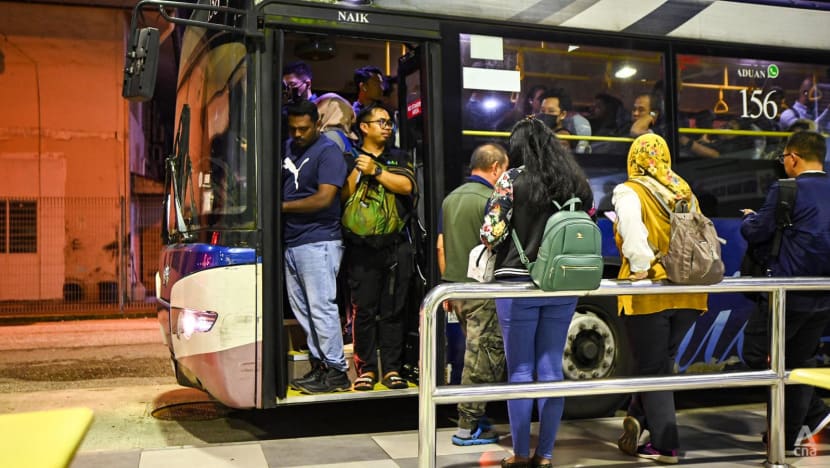
People taking a bus from Gelang Patah Bus Terminal heading to Singapore via Tuas checkpoint in the wee hours of the morning on Aug 5, 2025. (Photo: CNA/Zamzahuri Abas)

This audio is generated by an AI tool.
JOHOR BAHRU: As early as 5am last Tuesday (Aug 5), more than 100 people were already waiting in line at a nondescript bus station in the suburban town of Gelang Patah in southwest Johor.
When a yellow Causeway Link bus arrived on the platform, the commuters - most of whom were bleary-eyed - shuffled their feet forward.
Those at the front of the line boarded the bus until it was packed to the hilt. The majority of the passengers in the queue had to wait for the next one.
“During morning rush hour, this is normal,” said Kevin Foh, a Gelang Patah resident in his 30s who works in the retail industry in Singapore.

“Sometimes we have to wait for two to three buses before we can board, if we are lucky,” said Foh.
The bus terminal spans the size of around half a football field and serves as a key transit point for the thousands of Malaysians living in townships in southwest Johor like Pontian, Iskandar Puteri and Kulai who commute to Singapore daily for work.
The Causeway Link buses are the only viable public transport option for these commuters who travel to Singapore daily via the Tuas Second Link.
The Second Link bridge, unlike the Woodlands Causeway, does not offer other public transport options like a train shuttle or the choice to walk across.
Hence, Foh and many of these commuters whom CNA spoke to welcome the recent proposal by the Johor Chief Minister Onn Hafiz Ghazi for both Singapore and Malaysia to consider a second Rapid Transit System (RTS) Link connecting Tuas and Iskandar Puteri to further enhance cross-border mobility.
"In line with the royal decree of Johor Regent Tunku Ismail Sultan Ibrahim, I presented several strategic proposals, including a plan to connect Tuas and Iskandar Puteri via an RTS2 system," Onn Hafiz said in a statement on Facebook on Jul 31 regarding his meeting that day with Singapore Prime Minister Lawrence Wong.
However, Onn Hafiz did not specify where the RTS stations would be positioned in either Tuas or Iskandar Puteri. The latter is a city slightly smaller than half the size of Singapore, spanning northwards from the Second Link Bridge encompassing towns like Puteri Harbour, Gelang Patah, Bukit Indah and the Forest City property development.
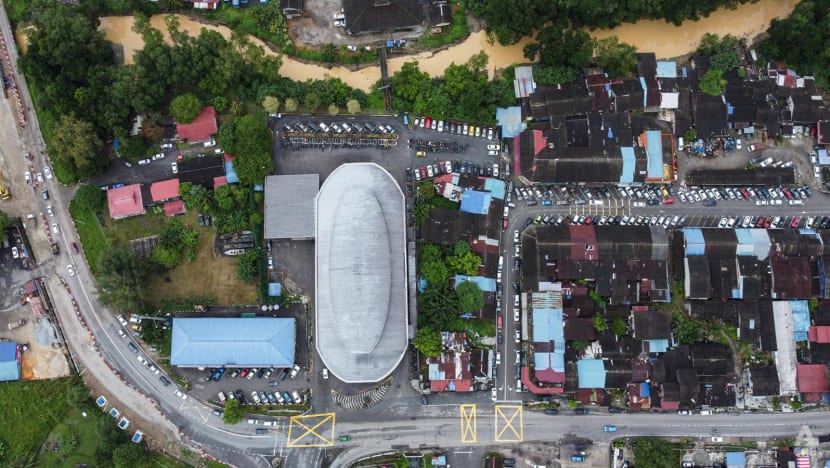
Foh told CNA that he thinks the second RTS proposal is a “good” idea.
“I will just take a taxi from my house to (the proposed RTS station in Iskandar Puteri) instead of this bus station and take the train over to Singapore. It will be much quicker - less waiting time, less queueing hopefully,” said Foh.
“People living in central JB who commute to Singapore will soon get to take the RTS, but that station is simply too far for those of us staying in the west,” he added.
The first Johor-Singapore RTS Link is set to commence operations in December 2026 and installation works for its rail system were about 56 per cent complete as of the end of June.
However, the Bukit Chagar station on the Johor side is 25km away from Gelang Patah, a two-hour public bus ride during peak hour.
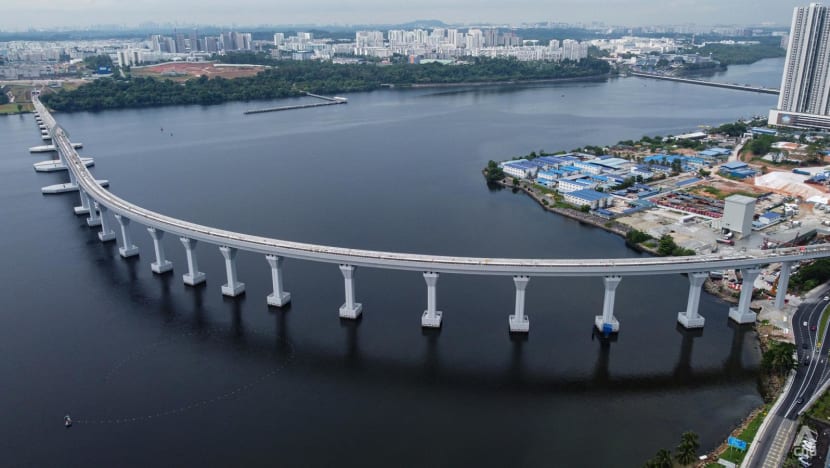
Thus, the proposed second RTS Link will likely be a huge boost to travellers in the west of southern Johor and Singapore, as well as rejuvenate the Iskandar Puteri area which is also part of the Johor-Singapore Special Economic Zone (SEZ), analysts and experts told CNA.
However, they also pointed out that the proposed transit points for the project - Iskandar Puteri and Tuas - lack last-mile connectivity and may not be well integrated with existing transport networks.
They added that while there is seemingly strong political will from the Johor state government and the Johor royal family, questions remain as to whether the relatively low passenger volume would justify the construction costs.
In response to CNA's queries, Singapore’s Ministry of Transport said that it is “open to discussing any new proposals from Malaysia”.
“In the meantime, we are working closely with Malaysia on the commencement of passenger service for the Johor Bahru-Singapore Rapid Transit System (RTS) Link,” it added.
CNA has also reached out to Onn Hafiz’s office for comment.
PROPOSED SECOND RTS CAN REJUVENATE PUTERI HARBOUR, FOREST CITY
Another Malaysian commuter who welcomes the second RTS Link proposal is Muhammad Syahmi Sarbani.
The 26-year-old - who rents a small room in a condominium at Puteri Harbour and commutes to Singapore five days a week by bus for his job in the food and beverage industry - told CNA that he believes the proposed rail link could refresh the area he lives in.
Puteri Harbour includes the Medini area and is home to high-rise service apartments and condominiums, the Legoland theme park, Gleneagles Medini Hospital and other smaller retail malls. It is a tourism-centric town in the Iskandar Puteri city, and experts say it will likely benefit from spillover effects of having the proposed second RTS Link close by.
“Puteri Harbour is a dead town, many of the retailers don’t stay long and most of the condominium units are empty. I think an RTS station (nearby) would change things, make it more vibrant,” said Syahmi.
Johor-based analyst Samuel Tan, chief executive of boutique firm Olive Tree Property Consultants, told CNA that the proposed second RTS Link could be a catalyst to rejuvenate Johor’s quieter south-west districts, similar to how the first RTS Link has already triggered transformations in Johor Bahru town centre.
“This is a revolutionary vision and a game-changing idea which will change the landscape of the western part of Johor Bahru. The spillover effect will be felt across Johor state,” said Tan.
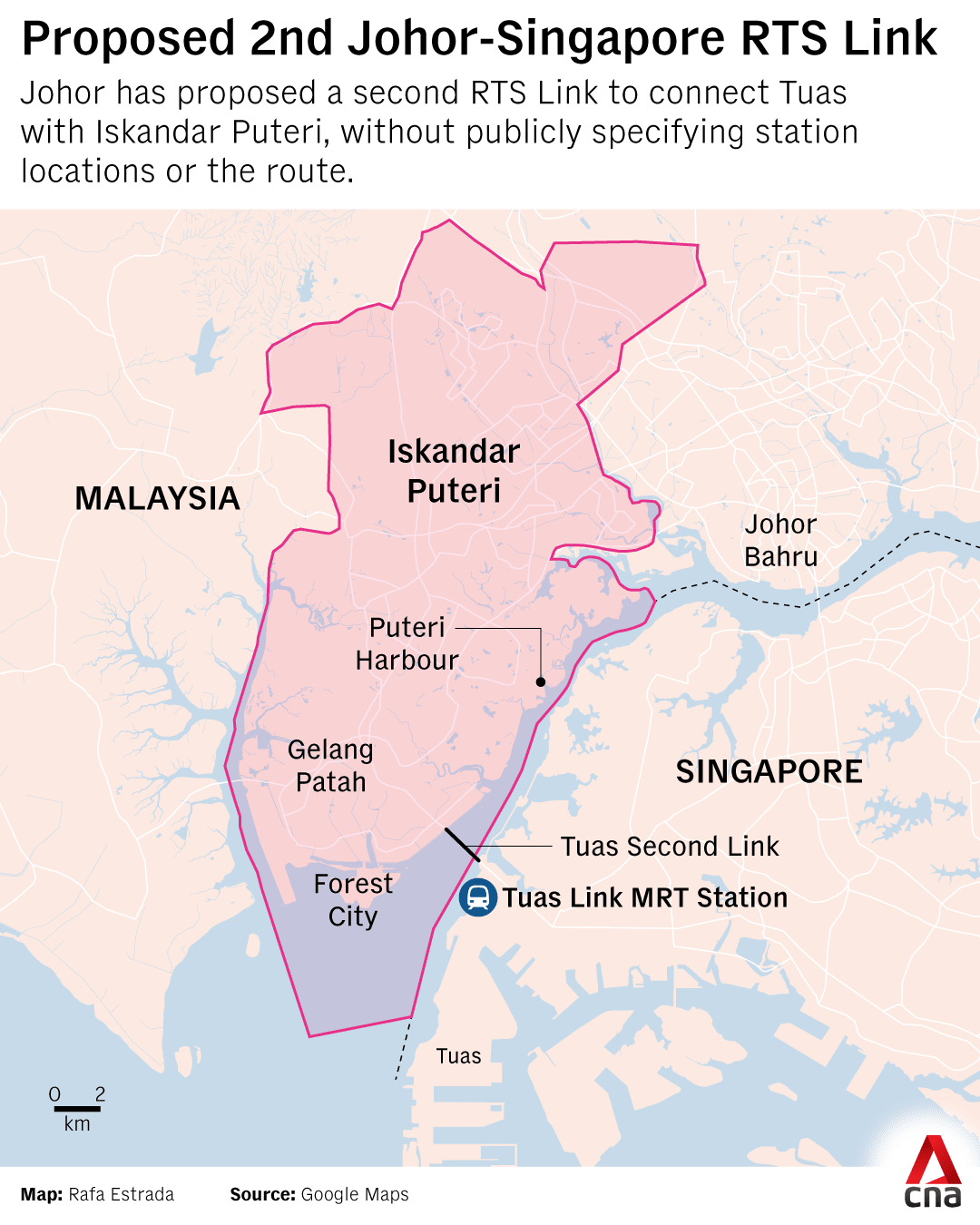
He noted that following the announcement of the first RTS Link, prices of land around the project station have increased from roughly RM700 (US$165) per square foot to more than double, at around RM1,500 per square foot.
“Property values in Iskandar Puteri are expected to rise due to the conveniences and increased demand … although the magnitude (of the increase) is unknown,” said Tan, citing the need for more details of the project before an accurate projection can be made.
He added that Johor’s beleaguered Forest City development could also benefit from the proposed rail link as it is located within Iskandar Puteri city.
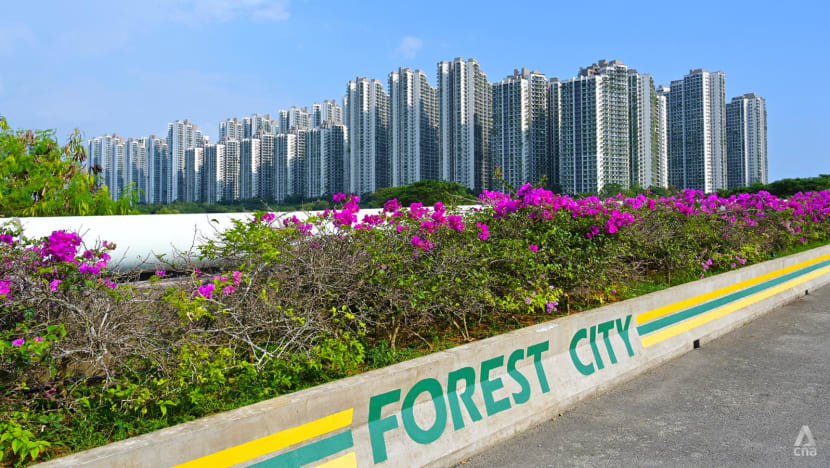
The US$100 billion mega housing project, labelled by various media reports as a “ghost town”, has been integrated into the Johor-Singapore SEZ overall plan as a financial hub and a location suitable for family offices.
“The (proposed second RTS Link) will further rejuvenate Forest City and make it a major … hub of the region,” added Tan.
Academic Serina Rahman - who is a lecturer with the National University of Singapore’s Southeast Asian Studies department - told CNA that the proposed second RTS Link could also beef up the number of Singapore businesses who might be keen to expand operations into Johor as part of the upcoming SEZ.
“Better transport links would inevitably positively impact the SEZ, it makes it easier for people to travel and do business,” said Serina, who is also based in Iskandar Puteri and commutes to Singapore on weekdays for work via bus.
She added that the south-west part of Johor has land space suitable for industrial parks and offices which will allow Singapore businesses to move over seamlessly. A second RTS Link in the area would boost this proposition for companies, she said.
“So if we are genuinely looking at the SEZ as an improvement to both countries as a whole, (an RTS Link on the west side) would be a positive way forward,” said Serina.
While she was sanguine of the proposal, the conservation scientist expressed hope that authorities would also consider how construction for this proposed RTS Link could impact the marine ecosystem in the area, and affect the livelihoods of Johor fishermen who rely on seafood catch in the waters around the Tuas Second Link.
“Will the fishermen be banned from passing through the construction area? Will there be a danger of debris collapsing on them? How will construction impact their livelihoods,” said Serina.
LACK OF LAST-MILE CONNECTIVITY
While many commuters and experts are optimistic over how the proposed second RTS Link could boost connectivity between Singapore and Malaysia, some are wary over how the two proposed stations - Iskandar Puteri and Tuas - lack last-mile connectivity for travellers, particularly on the Johor side.
Transport expert Walter Theseira of the Singapore University of Social Sciences told CNA that for the proposed second RTS Link to be feasible for commuters, the stations on both sides of the border must be integrated into their respective land transport systems.
Theseira stressed that most parts of Iskandar Puteri are not currently integrated to an efficient rail or bus network, noting that he believes the southwestern part of Johor has been developed primarily around private transport networks.
“The network primarily caters to people who drive or take motorbikes, and the public transport connectivity is actually very poor on the west side (of southern Johor),” said Theseira.
“Not only is it not a public transport node, the western part (of southern Johor) is also, in my view, not a significant driver of demand as a location Singaporean visitors would visit regularly,” he added.
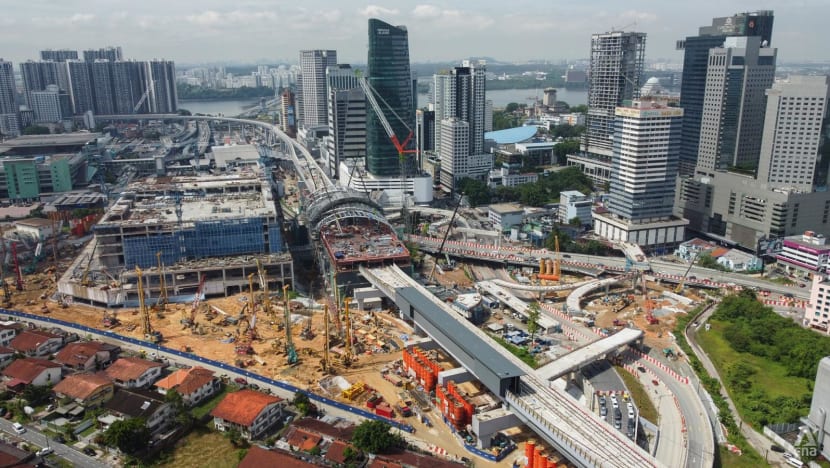
In February, the Malaysia government said that an elevated system of a public bus-tram network or autonomous rail rapid transit (ART) will be built in southern Johor to ease the area's public transportation woes.
The Johor state government said in 2024 that the proposed rail network would stretch 30km and transport passengers from the Johor Bahru city centre to the suburbs via three lines: The Iskandar Puteri, Skudai and Tebrau lines.
While Iskandar Puteri is slated to be one of the lines, Malaysian authorities have not specified the different stops on the ART network and whether it will be linked up to the proposed second RTS Link.
Meanwhile, the Johor state government has said that the ART system will be linked to the RTS Link station in Bukit Chagar in Johor Bahru town centre to assist with passenger dispersal and assist travellers with last mile connection.
Transport experts whom CNA spoke to stressed that for the second RTS Link proposal to be viable, it would be key that the area where the RTS station is stipulated to be in Iskandar Puteri, also be incorporated into the elevated ART network.
Engineering expert Terence Fan, assistant professor of strategy and entrepreneurship at the Singapore Management University, told CNA: “I think we're overdue for having more links between Singapore and Johor. The only concern here is that, as it stands on the (Iskandar Puteri) side, there's not much public transportation.”
Theseira also outlined how the proposed RTS Link may not appeal to some Malaysian commuters, many of whom ride motorcycles across the Tuas Second Link.
He posited that it would be unlikely that these motorcyclists would volunteer to swap out their current mode of transport for the RTS Link given that they do not pay toll at the land checkpoints, and they can use their motorbikes to travel directly between their home and workplace.
“I think the RTS Link proposal, given this context, is not at the moment realistic,” he added.
Muhammad Kamaruddin Daud, a Malaysian who lives in Kulai and rides his motorcycle across to his workplace in Jurong daily, told CNA that he is unlikely to switch to the proposed second RTS Link if it comes to fruition.
“I think travelling by motorbike is more convenient. And these days there is rarely a jam (on the Second Link bridge) so no point to change,” he said.
Meanwhile, experts added that while Tuas is connected to Singapore Mass Rapid Transit’s East-West Line, the area is predominantly an industrial zone, and may not be easily accessible to Singaporeans who mostly live in heartland estates.
Tuas Link MRT Station at the end of the East-West Line is about 1km from the Tuas checkpoint but about 10km from the nearest housing estates in Jurong West and Pioneer.
Tuas has three other stations - Tuas West Road, Tuas Crescent and Gul Circle - but all four stations in the area are not connected to any other lines. The nearest interchange is Jurong East located nine stations away from Tuas Link and connects to the North-South Line.
But Boon Lay - located six stops from Tuas Link - is expected to serve as an interchange once the Jurong Region Line is operational.
Fan said that the proposal by the Johor state government is “a bit strange” because Tuas is an industrial area made up largely of factories and a port.
At the same time, the current RTS Link near the Woodlands checkpoint is linked to Woodlands North MRT Station, which is on the Thomson-East Coast Line, and one station south of it - Woodlands - is linked to the North-South Line.
Theseira said: “The (proposed second) RTS Link has to be connected to a major rail (station) otherwise it's not viable.”
WILL LOWER PASSENGER VOLUME JUSTIFY CONSTRUCTION COSTS?
Analysts said that Onn Hafiz’s proposal to Singapore Prime Minister Lawrence Wong indicates that there is strong political will from the Johor royal family and the state government to push for this project.
Tan of Olive Tree Property Consultants told CNA that it shows that Johor is serious in the proposal and that it is not “merely talk shop”.
“This is logical as it will promote the economic development of Johor,” he added.
On the other hand, transport experts added that the passenger volume on the proposed RTS2 would likely pale in comparison to the under-construction RTS in the city centre, as evident from the different travel patterns at the Woodlands Causeway and Tuas Second Link.
However, whether Singapore is prepared to agree to the proposal and jointly fund the project remains to be seen, said some experts.
SUSS’ Theseira told CNA: “If somebody on the Malaysian side, like a private developer or public authority, wants to come up with the money to build this, then (it's fine).
“I don't think the Singapore side will be spending public money unless they are clear what the value is to the people.”
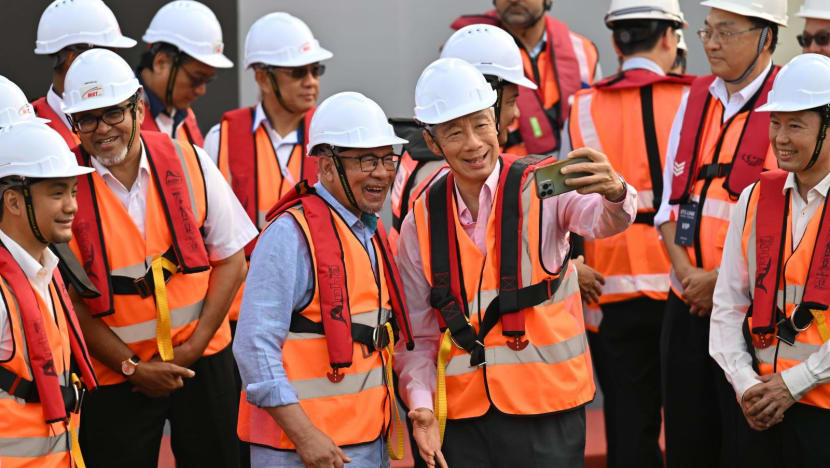
According to a press statement released by Singapore’s Immigration and Checkpoints Authority in 2023, Tuas Checkpoint clears about 123,000 travellers daily during weekdays. Fifty-five per cent of these - or about 68,000 - are motorcyclists.
In comparison, the Johor-Singapore Causeway serves around 300,000 commuters daily, more than double the total number at Tuas Checkpoint.
Hence, SMU’s Fan is unsure if it would be commercially viable for the proposed RTS2 to be constructed.
“You need a fairly high number of travellers consistently to make it make sense. Otherwise on a per travel or per passenger basis, the cost will be too high and the train tickets will be too expensive,” said Fan.
“If the volume of travellers is low, then is rail the best way to link up the west side? Then you might as well just have everybody take cross-border taxis,” he added.
Fan noted that the RTS at the city centre costs RM10 billion and is jointly funded with Singapore responsible for 61 per cent of the cost while Malaysia will pay the remaining 39 per cent.
Fan posited that even in the case the proposal for the second RTS Link is approved, it is unlikely that the Singapore government will agree to the same arrangement due to the lower value proposition.
“I see it being jointly funded (if it comes to fruition) but I’m not sure the same ratio will get the Singapore side excited,” he added.
























